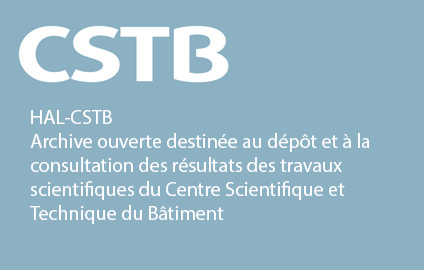Optimization of wood frame-based floors in order to improve impact noise
Résumé
It has been introduced in 2018 by the French housing certification organism (CERQUAL QUALITEL) a new requirement concerning impact noise in order to improve occupants acoustic comfort. The impact noise requirement corresponds now to L'<sub>nT,w</sub> and L?<sub>nT,w</sub>+C<sub>I50-2500</sub> equal to or below 55 dB. An investigation was undertaken in order to define a dry solution for wood frame-based floors fulfilling this requirement; by dry solution, it is intended to avoid standard screed requiring drying time and introducing humidity during the construction of wood-based building. Therefore the goal for the floor performance without any floor finishing was set to impact noise levels L<sub>n,w</sub> and L<sub>n,w</sub>+C<sub>I50-2500</sub> equal to or below 50 dB. Adding a mass layer between the wood frame-based floor and a dry screed was selected as a potential solution. A prediction tool is used to evaluate impact noise level and an optimization tool based on evolutionary algorithm is implemented in order to define the mass per unit area of the added mass layer allowing to reach the chosen impact noise level. Based on these obtained results, laboratory measurements were carried out with different materials as mass layer; they demonstrate that the objective in terms of impact noise level is reached. Measured and predicted impact noise levels are compared and discussed. Laboratory measurements also included sound source and rubber ball as excitation, to determine sound transmission index and maximum impact noise level respectively, as well as different types of floor covering. These results are also presented.
Origine : Fichiers éditeurs autorisés sur une archive ouverte
